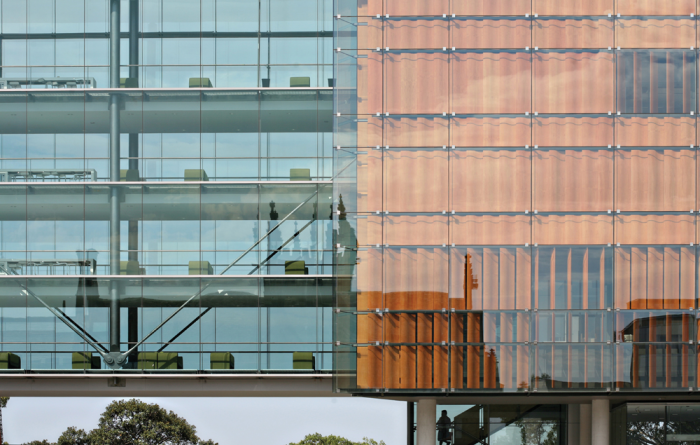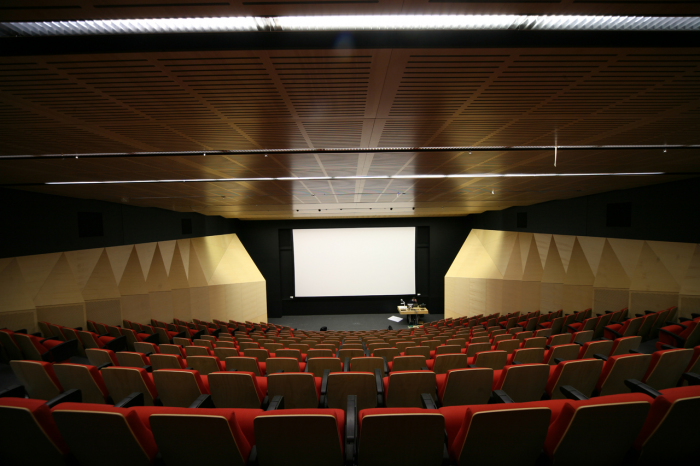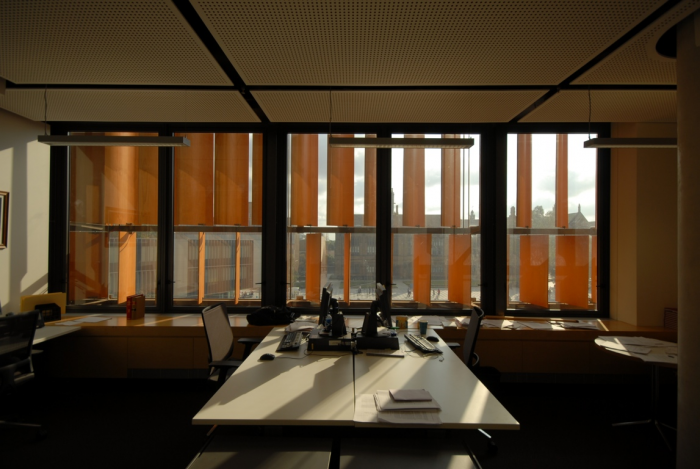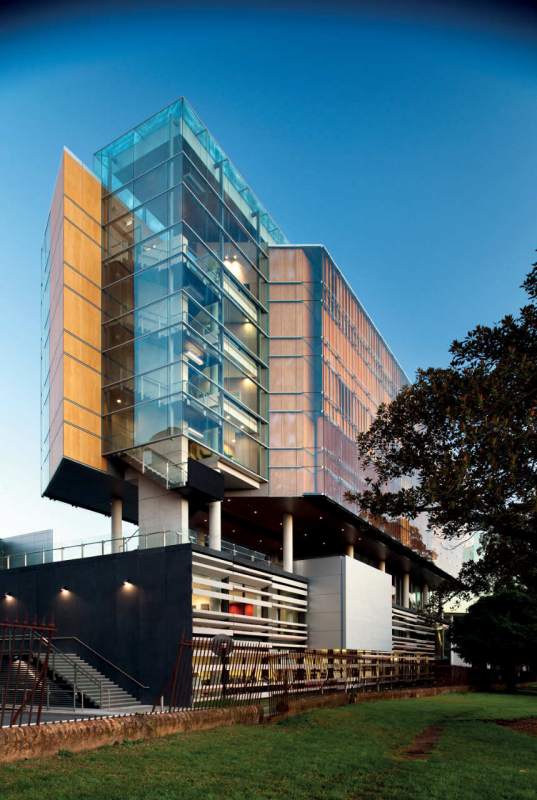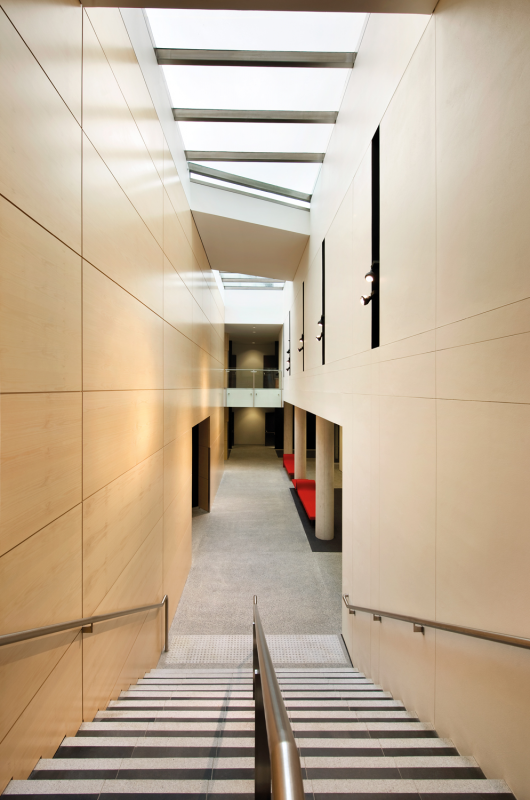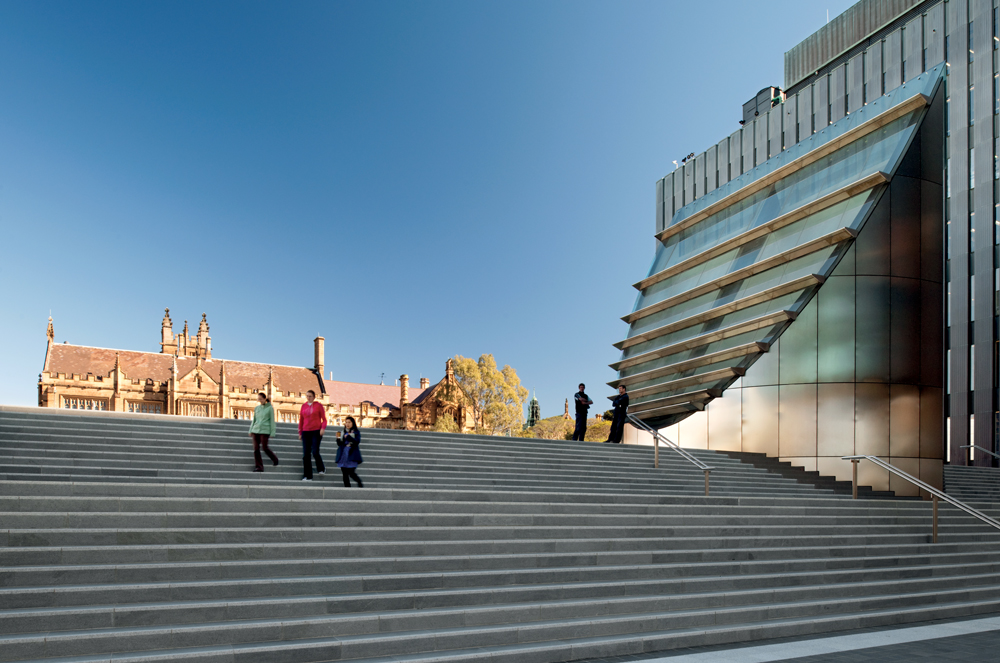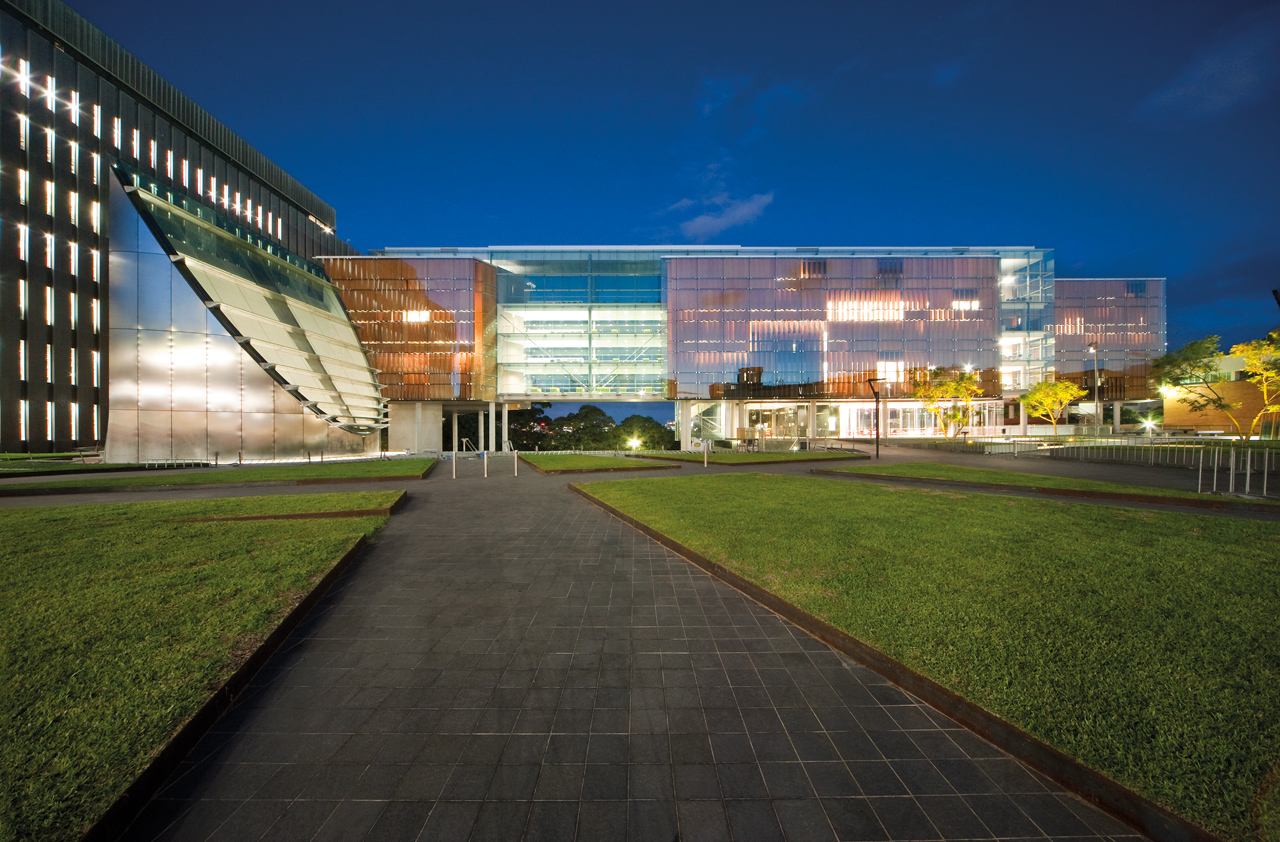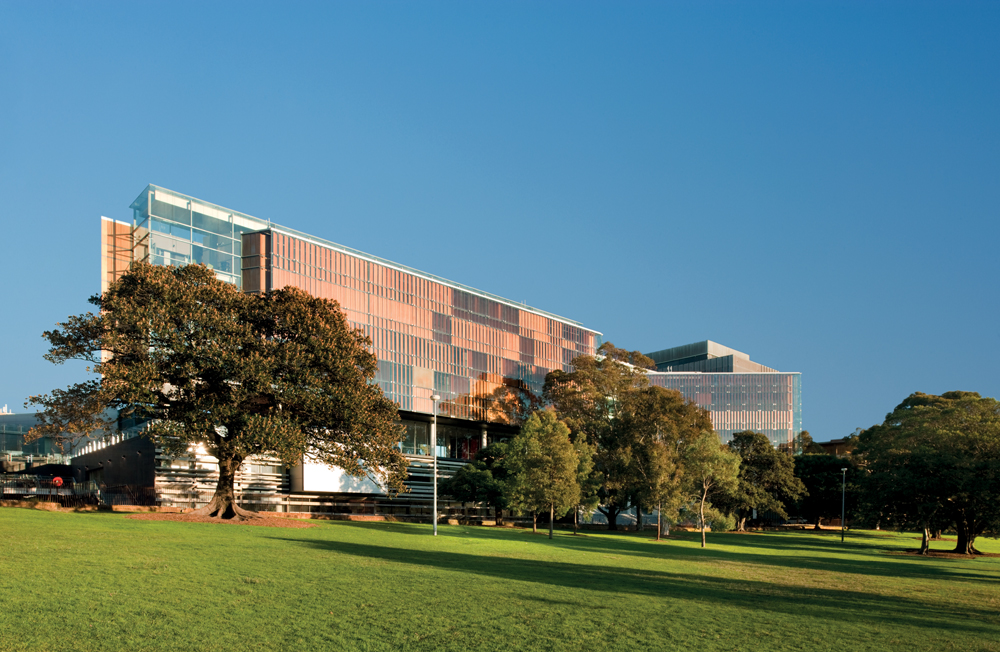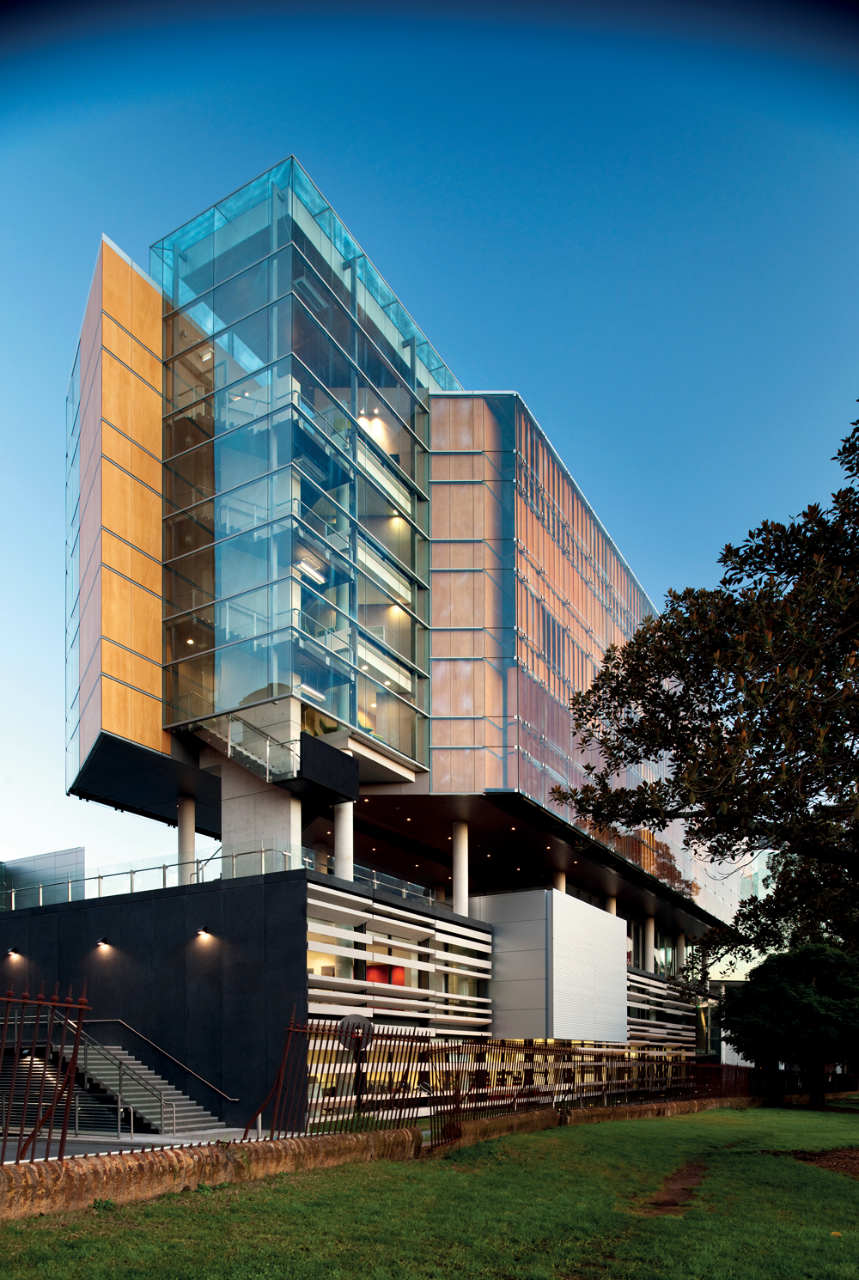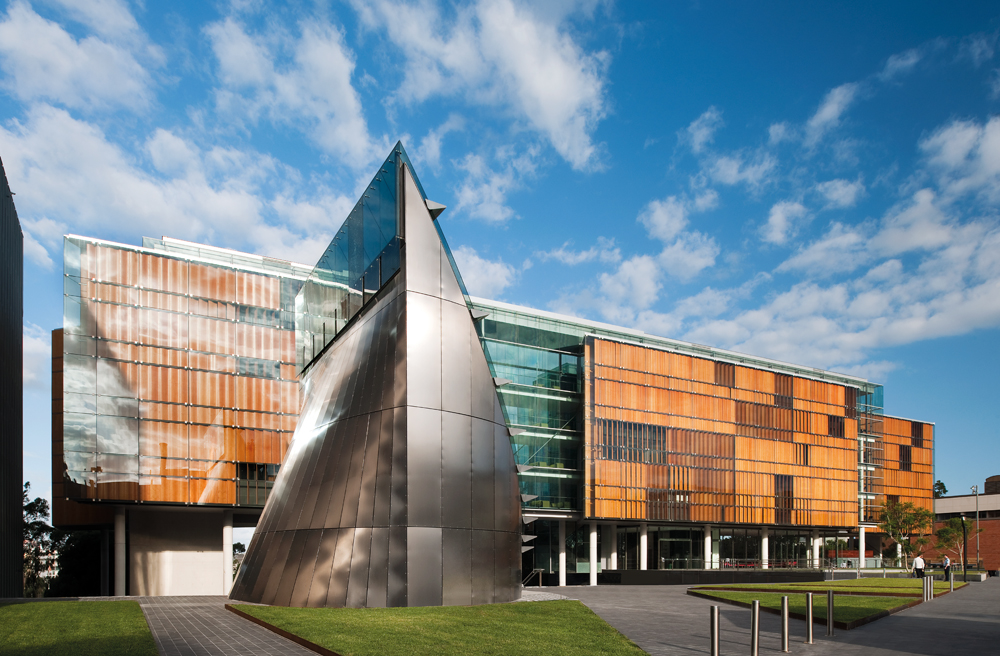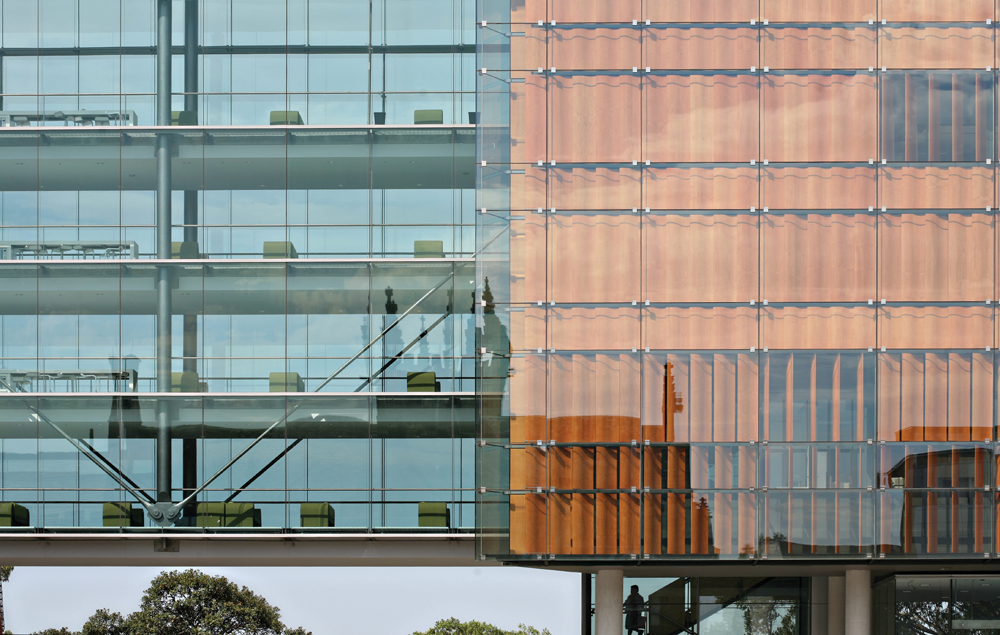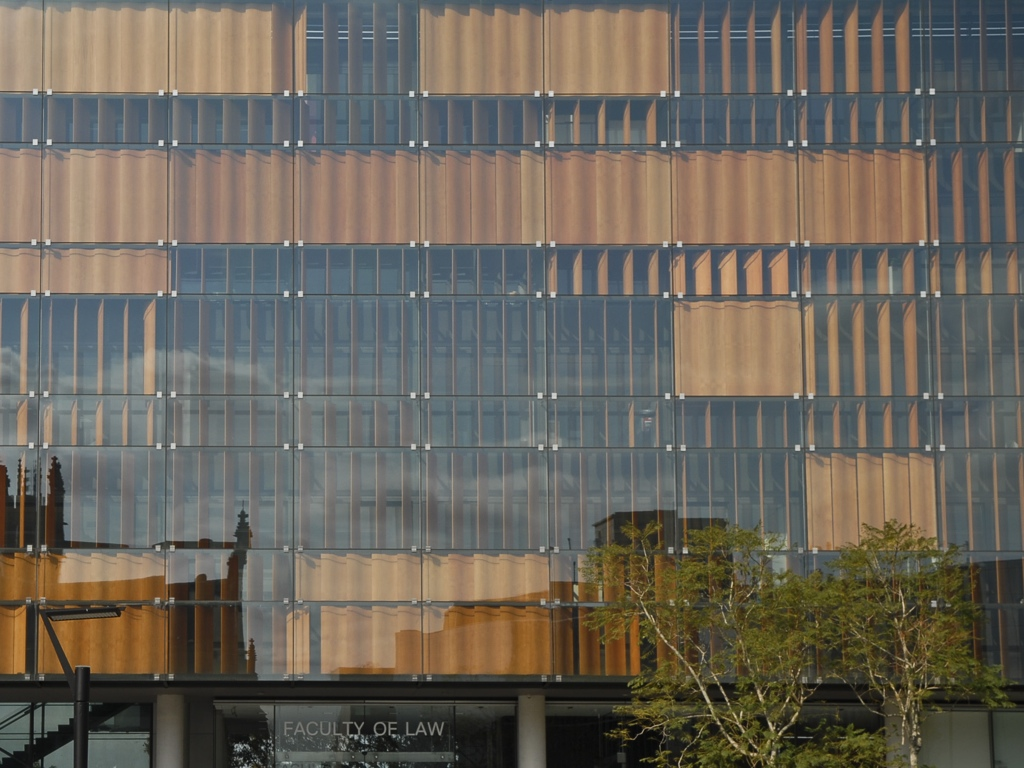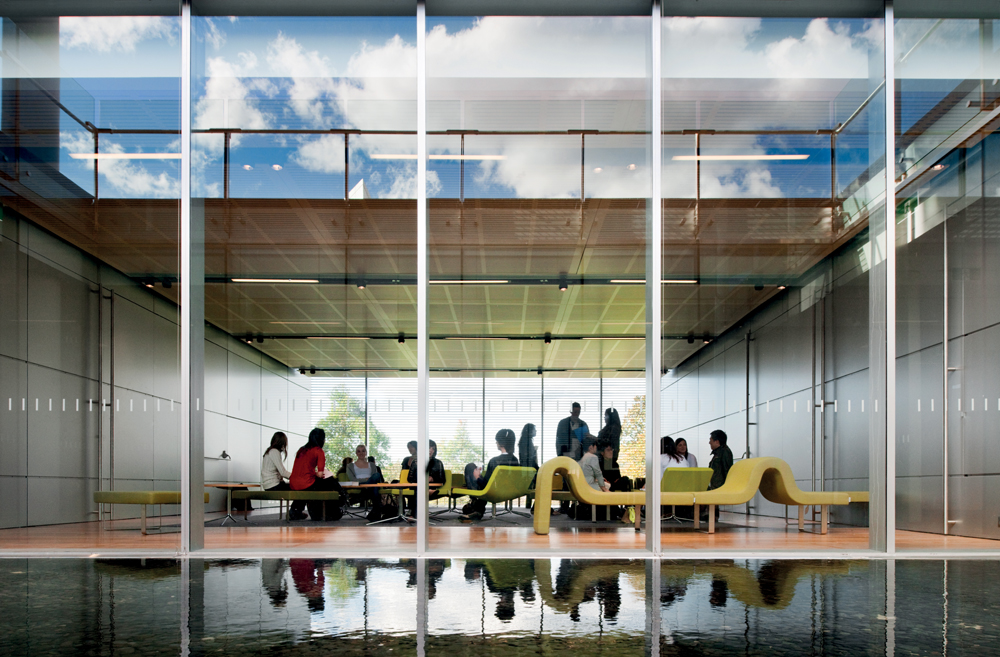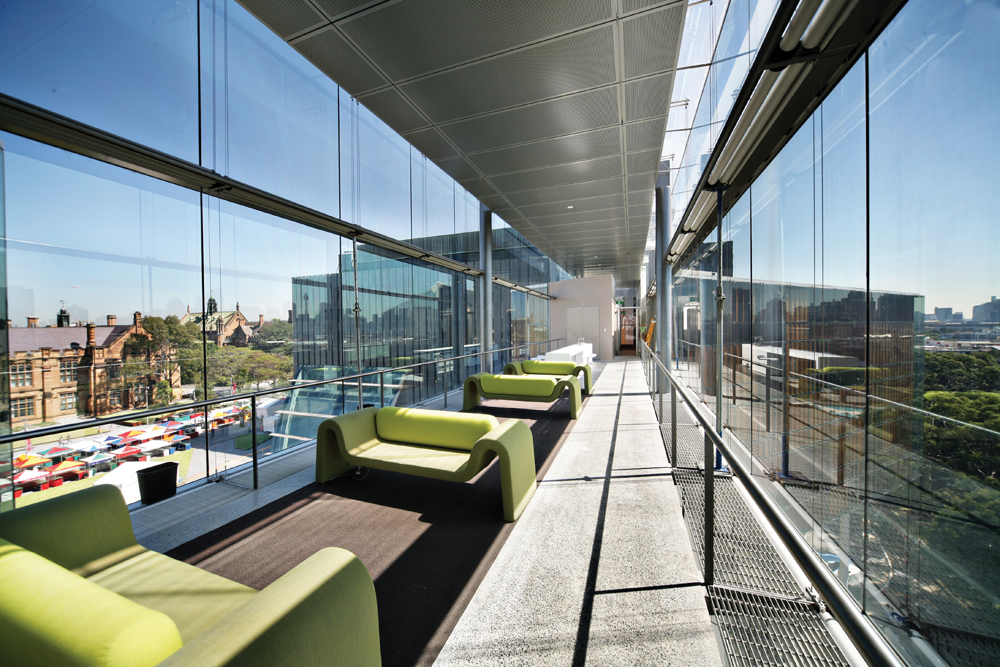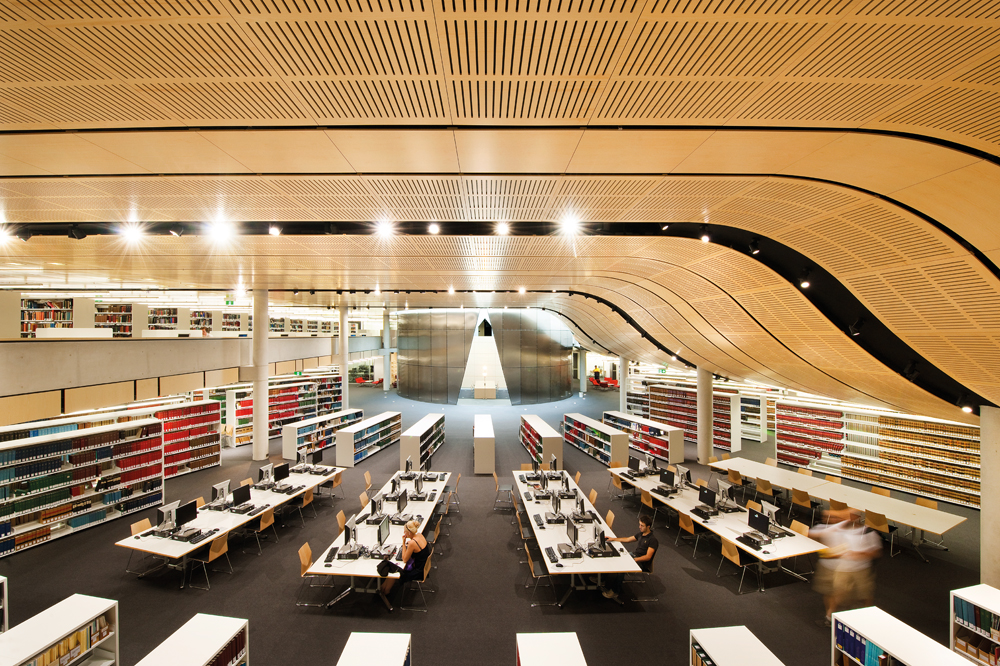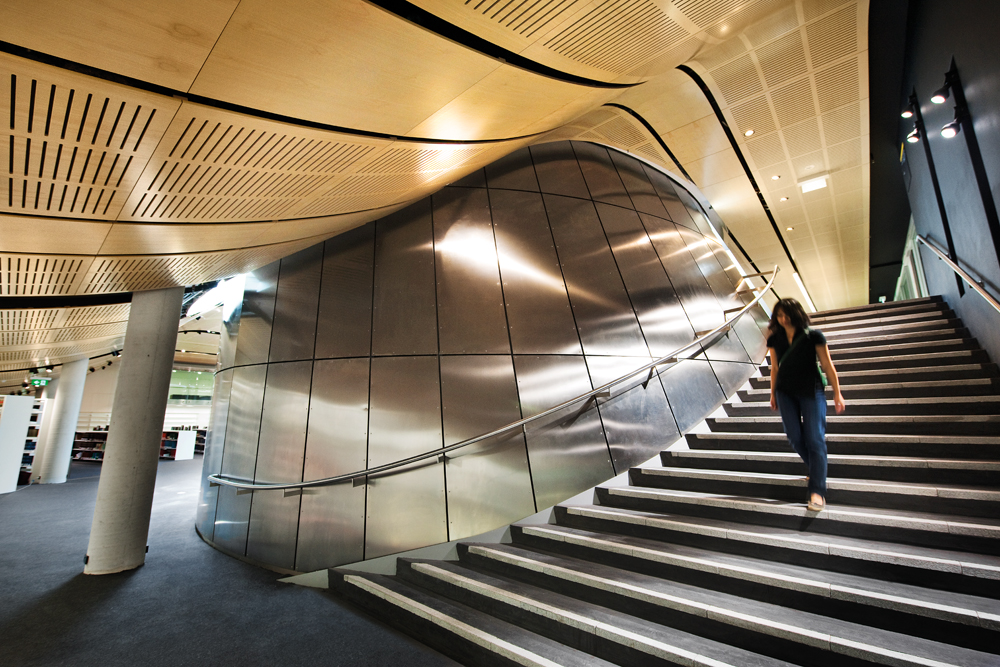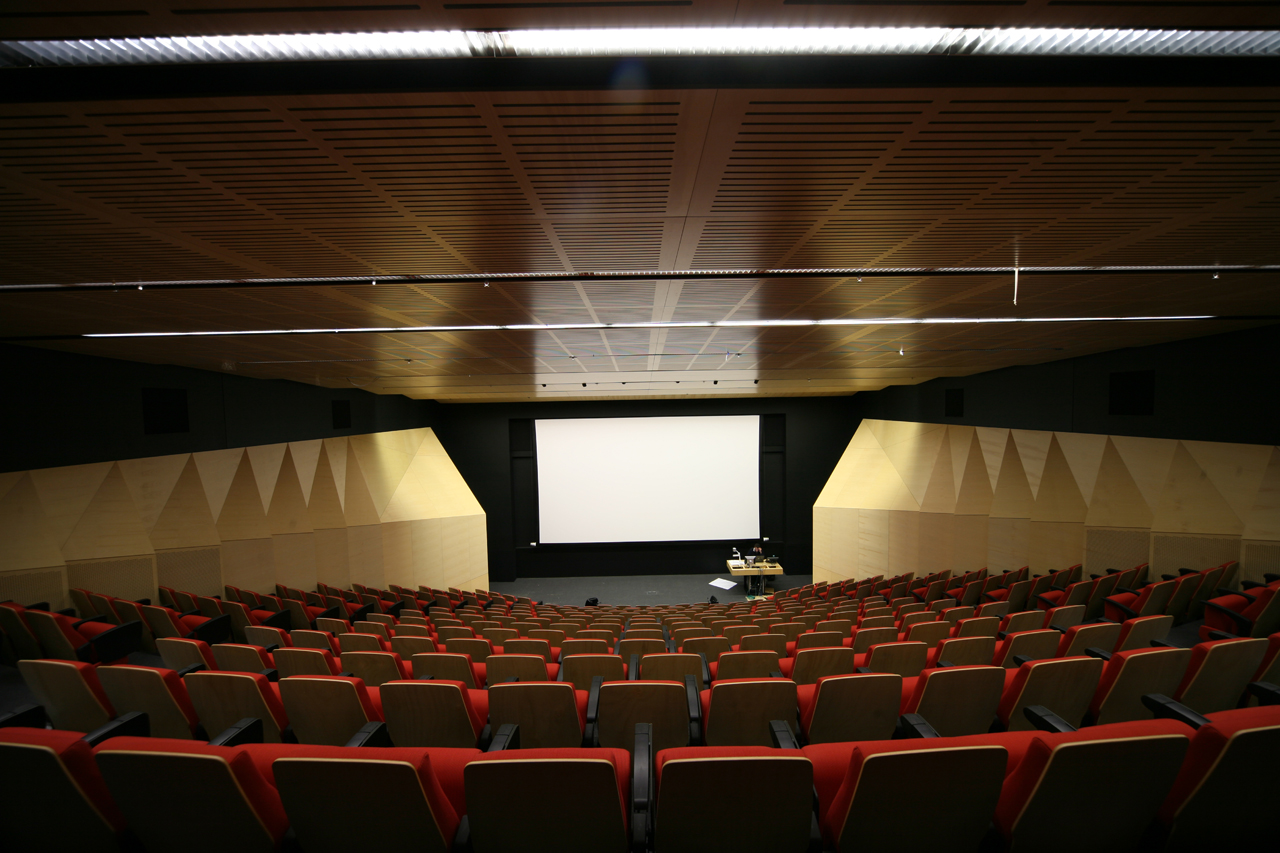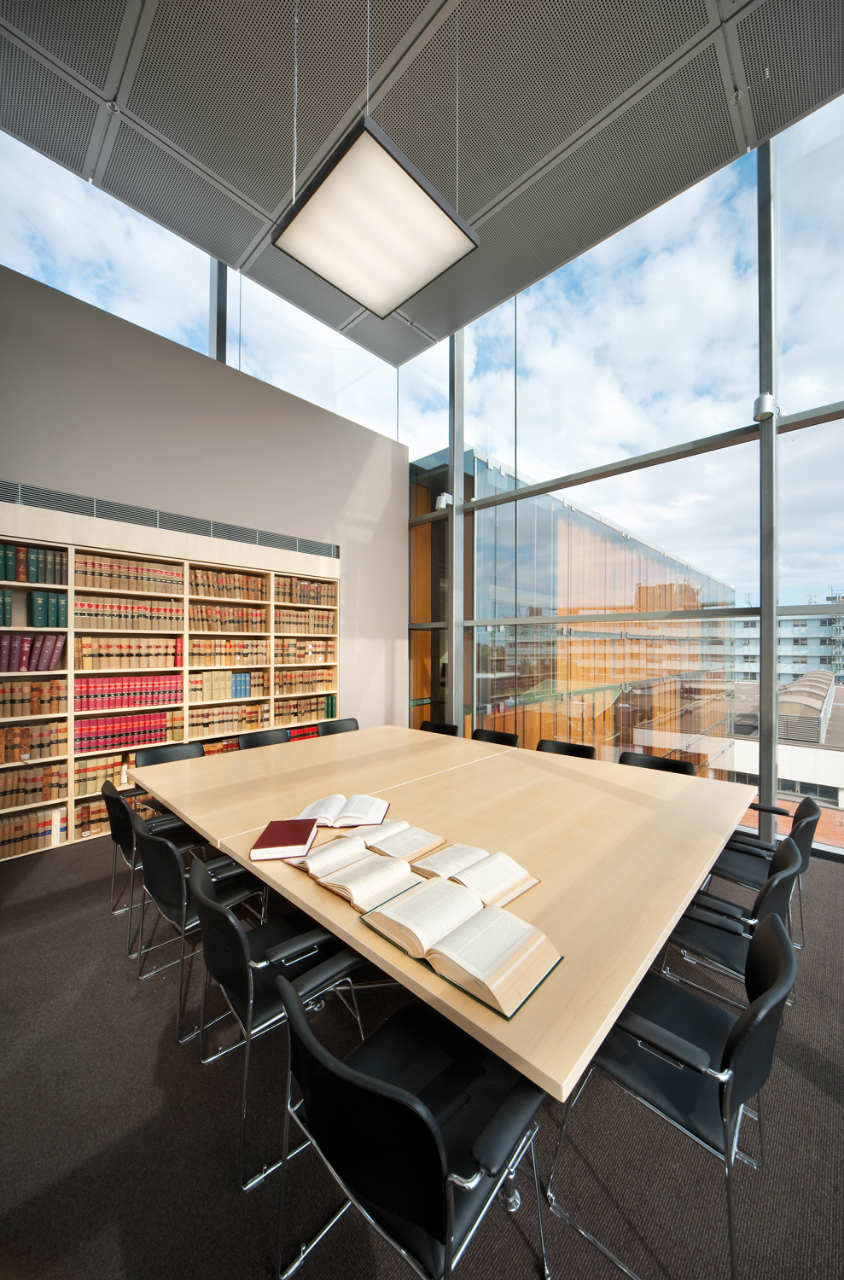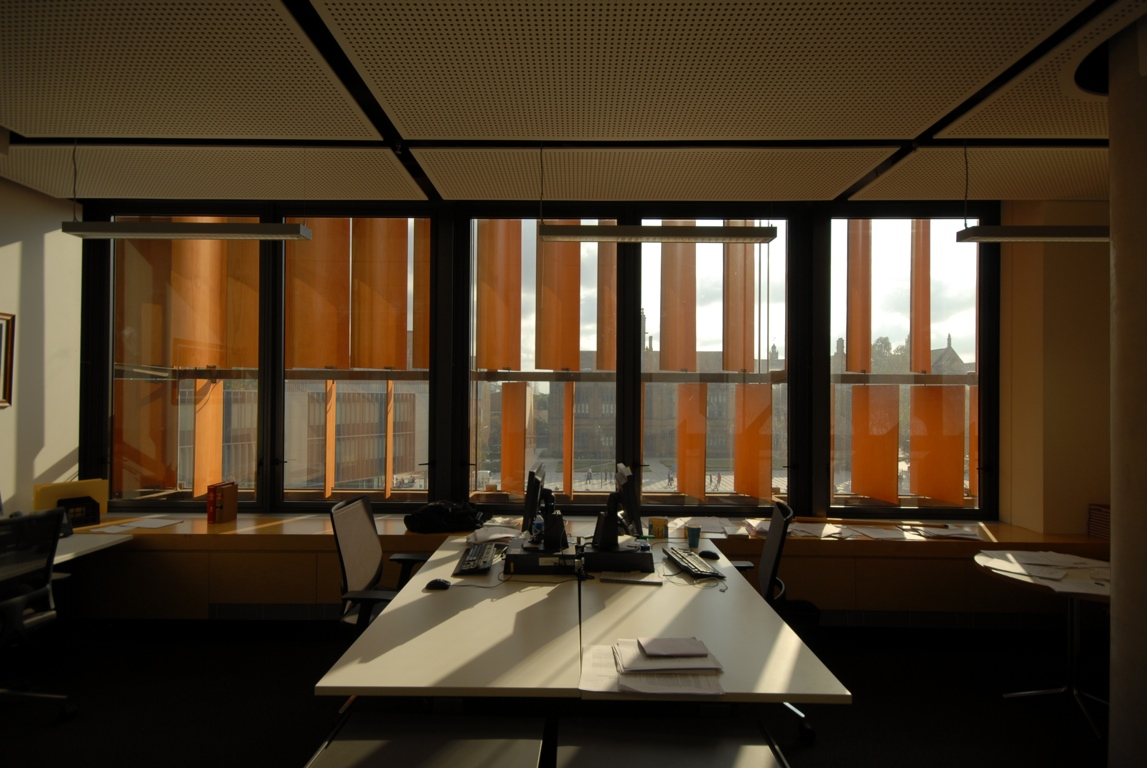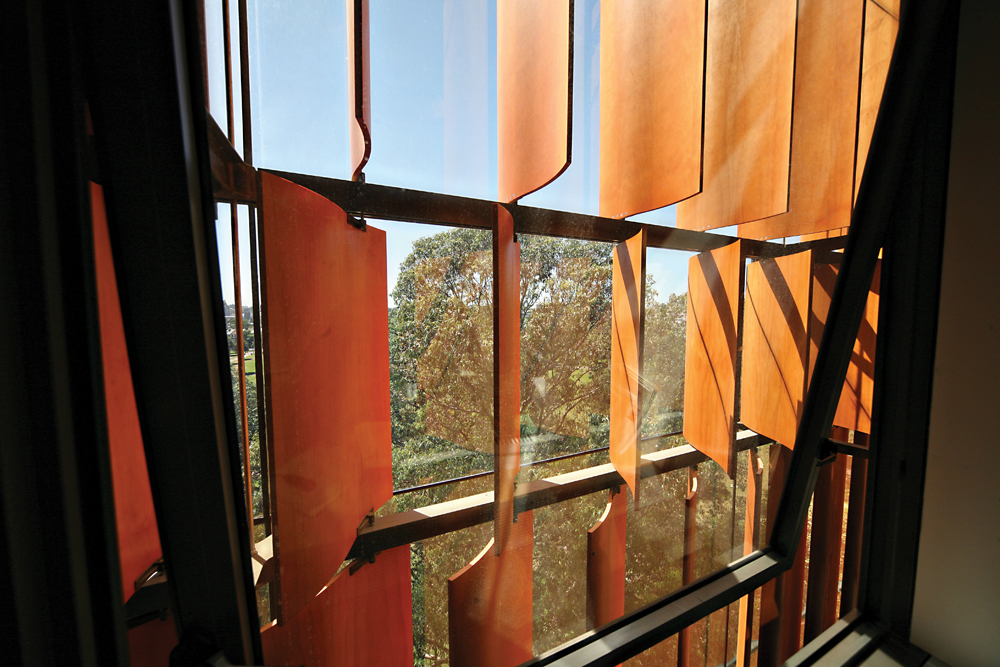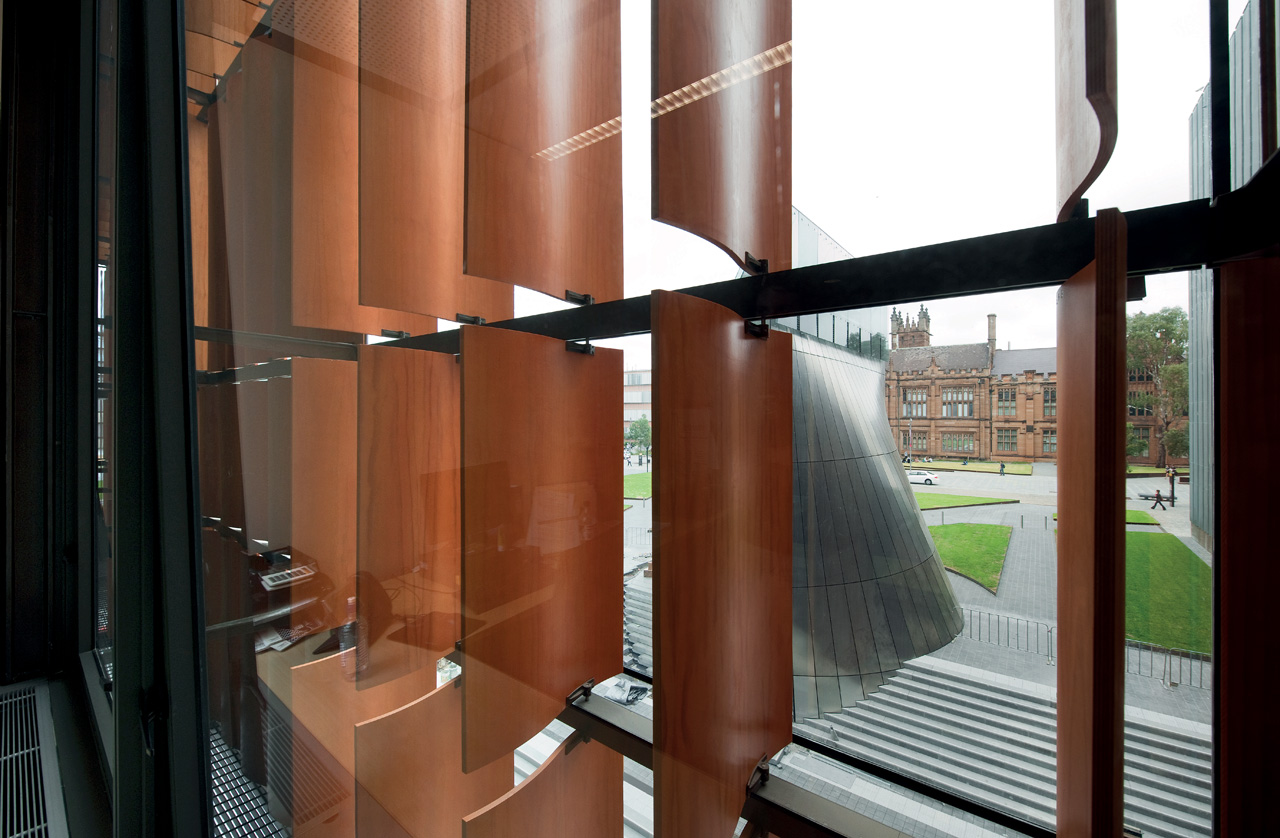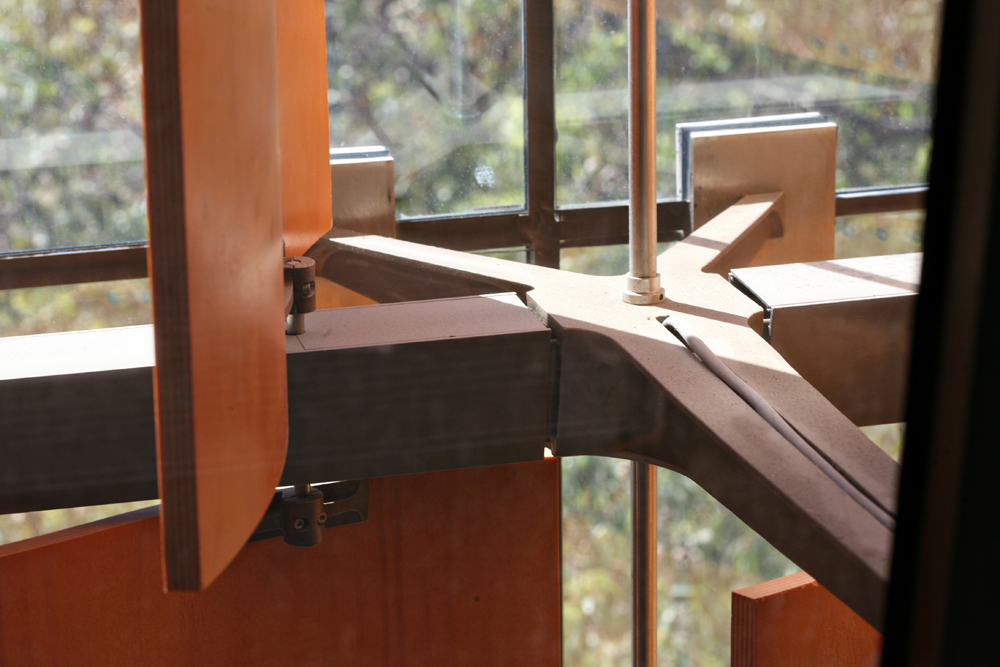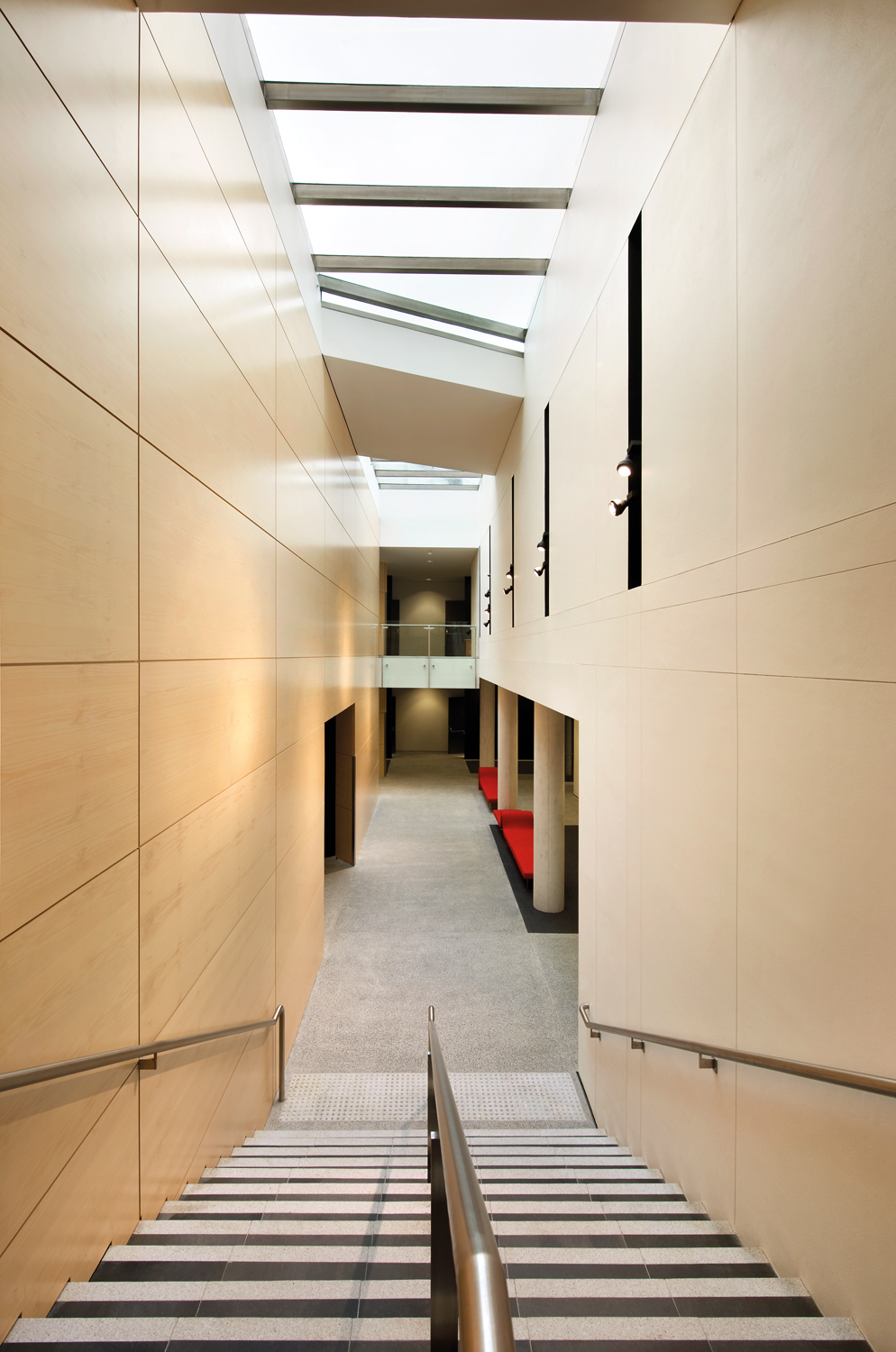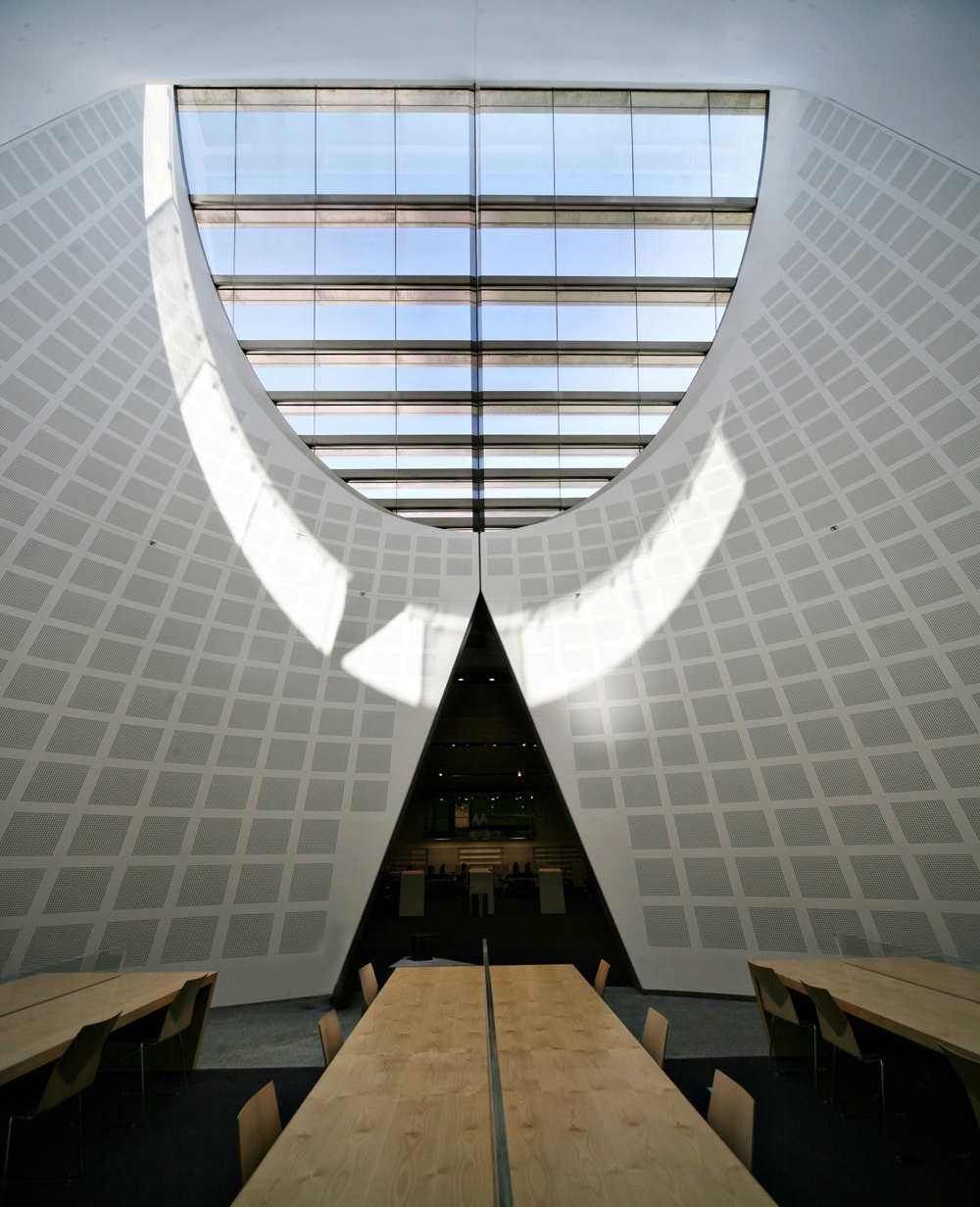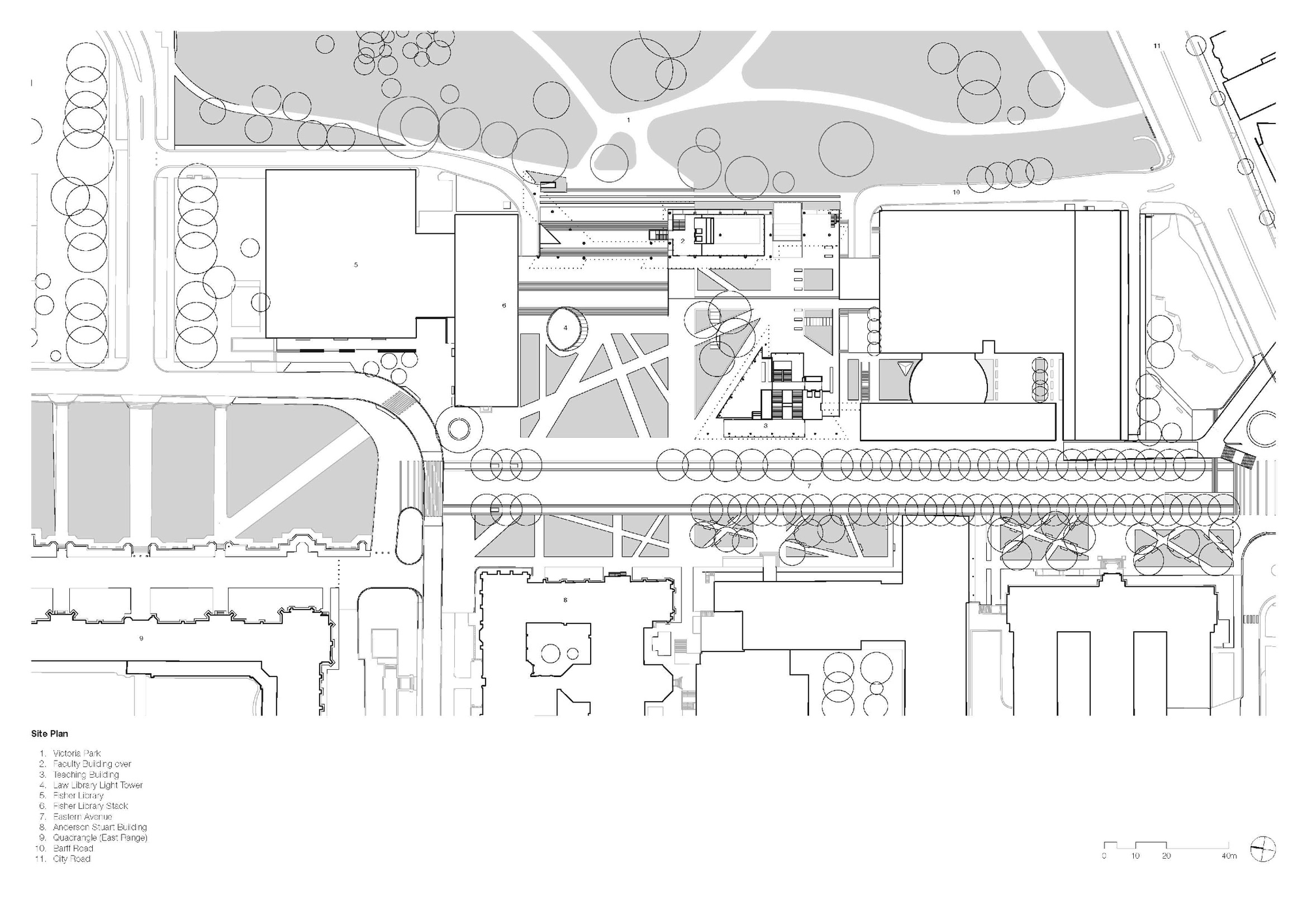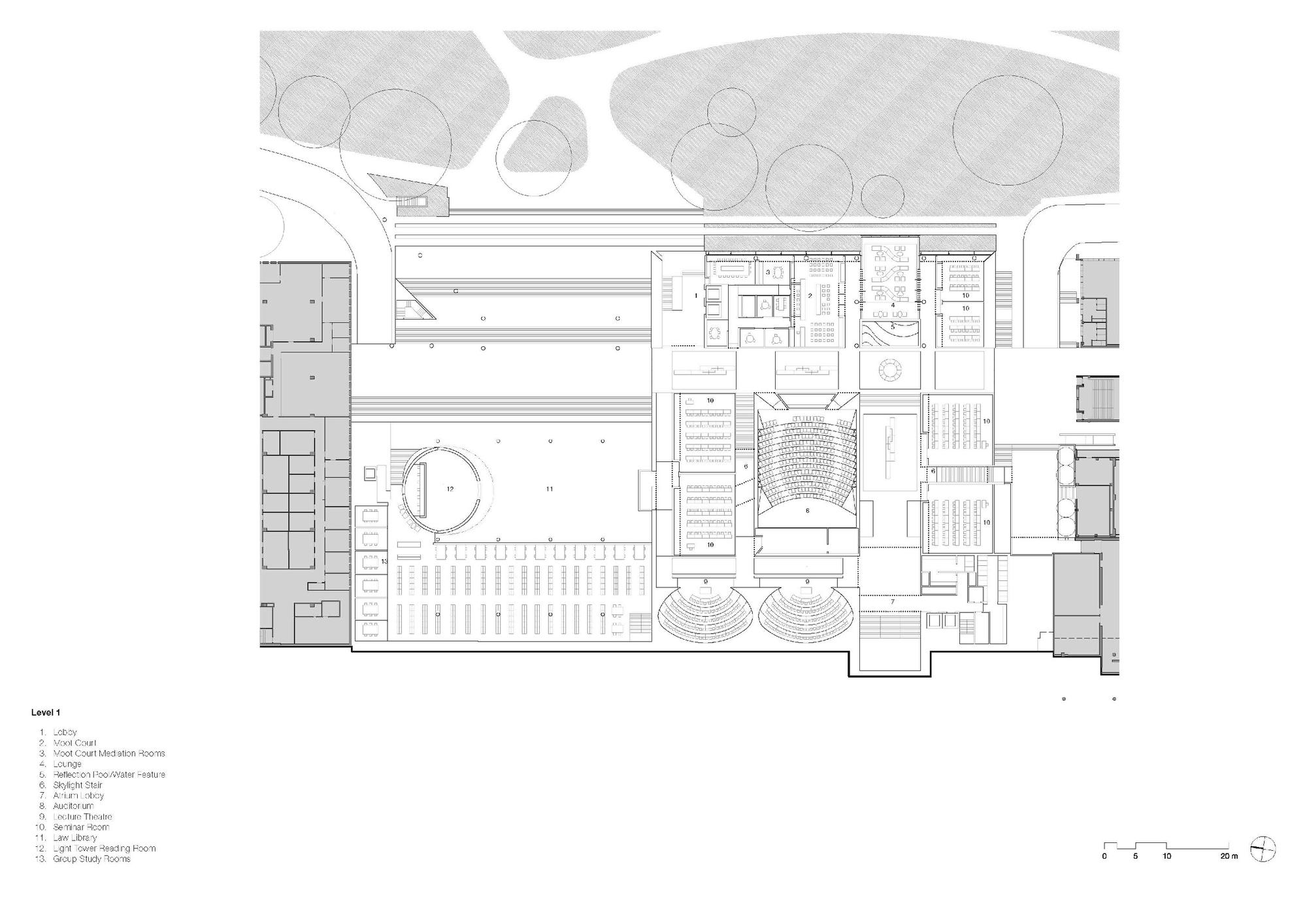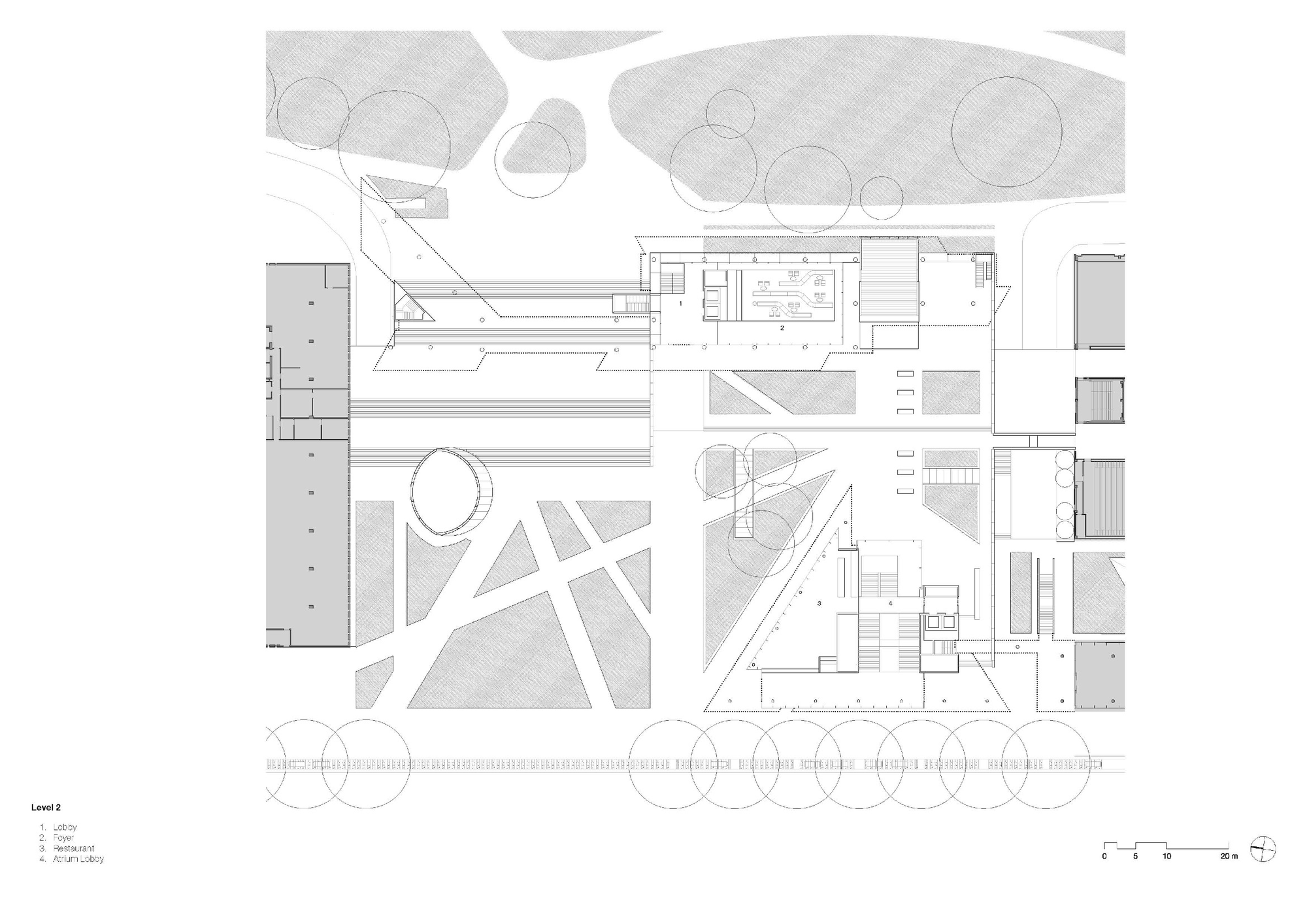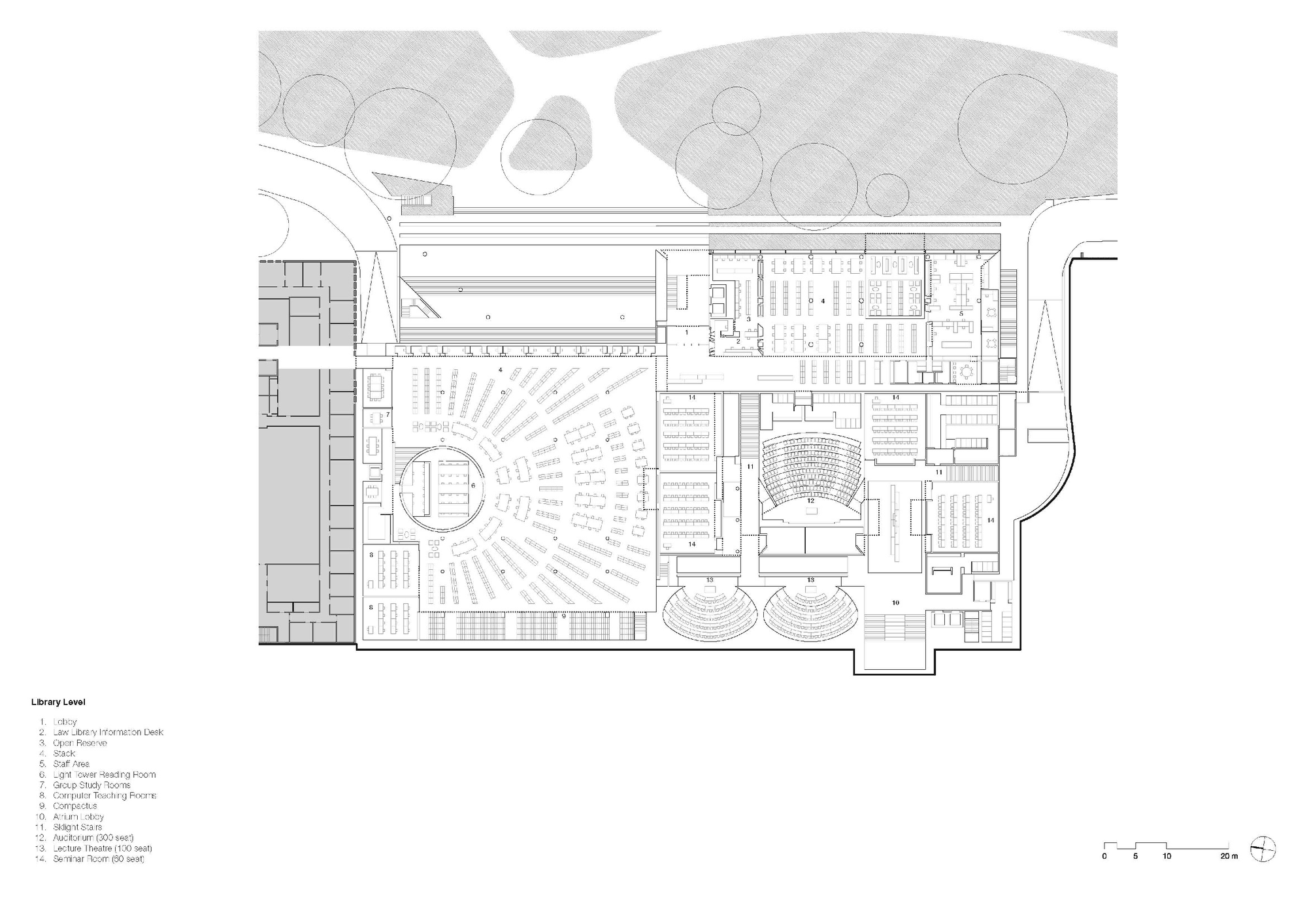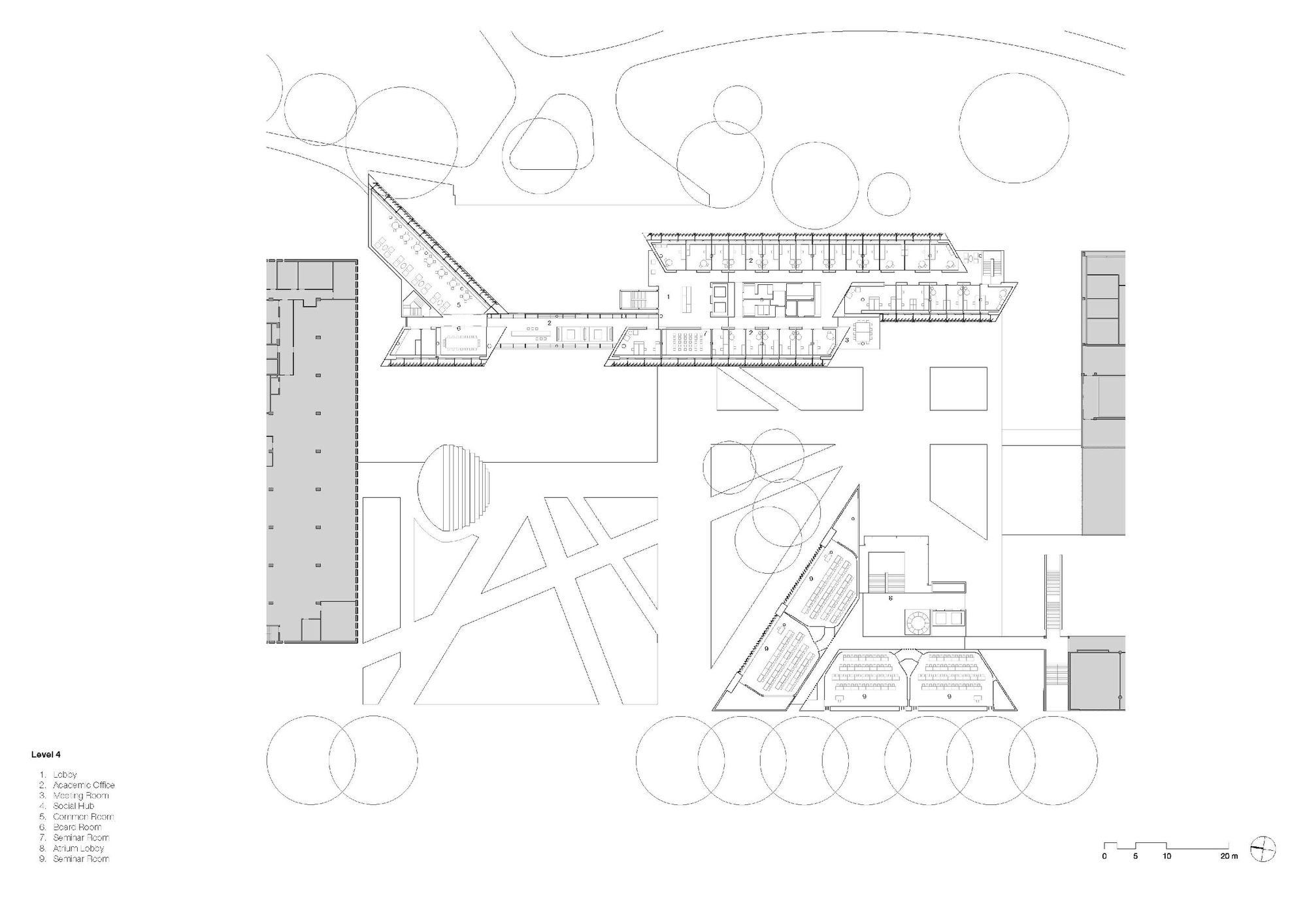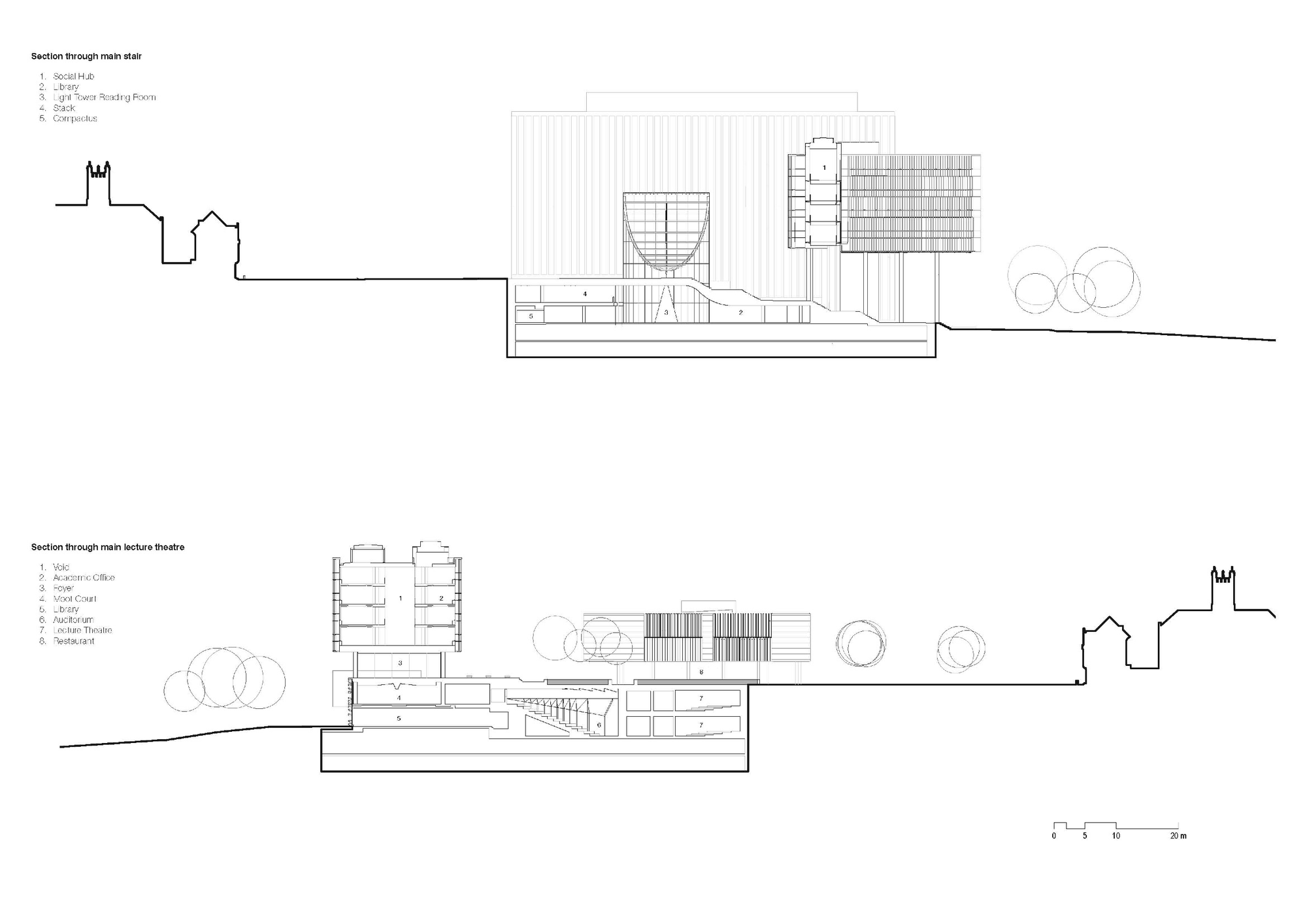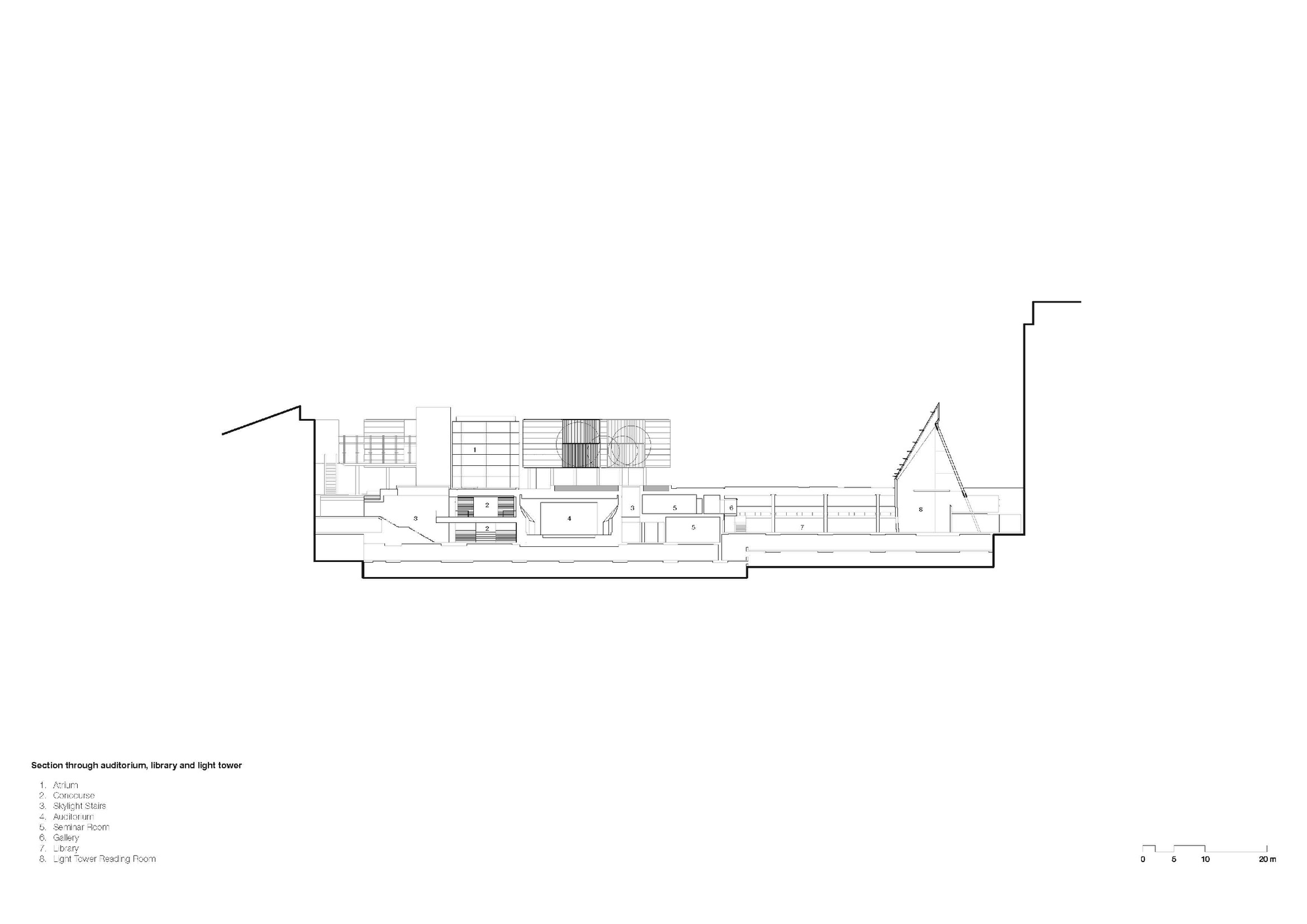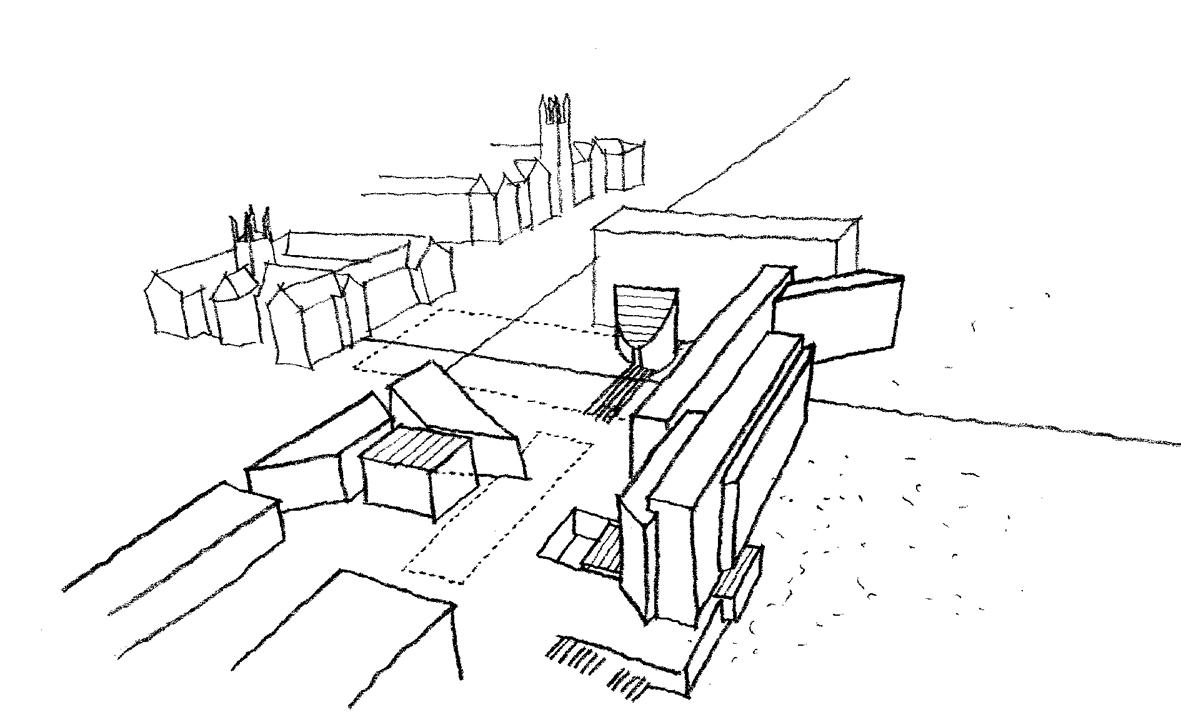Faculty of Law, University of Sydney
We interpreted this project as an opportunity to redefine and reinterpret the architectural dialectic between city and campus: to extend the public domain and create a new opening of the University to the community, parkland and city beyond, with the study of law balanced carefully at this edge; to transform a great turn-of-the-century campus, damaged by post-war development, into a more open, welcoming environment reflecting contemporary social values and aspirations. The complex and extensive program for the project into podium and superstructures which allowed the creation of an extended public domain of lawns, terraces and plazas at the podium level, or Eastern Avenue level, the primary public artery of the campus. Within this solid podium are the library and teaching spaces accessed from the terraces and lit from above. Suspended above the podium are a series of superstructures that split and splinter the remaining program into fragments that coalesce at moments of the definition of the public domain.
The complex and extensive program for the project into podium and superstructures which allowed the creation of an extended public domain of lawns, terraces and plazas at the podium level, or Eastern Avenue level, the primary public artery of the campus. Within this solid podium are the library and teaching spaces accessed from the terraces and lit from above. Suspended above the podium are a series of superstructures that split and splinter the remaining program into fragments that coalesce at moments of the definition of the public domain.
These splintered forms are frozen or locked in position by three glass and metal elements and a spatial urban shaft. A cubic glass atrium locks the fragments of the teaching form into spatial and urban alignment at the moment of primary vertical circulation. A curvilinear profiled form of stainless steel penetrates the primary platform delineating the open space as a figure against the silent backdrop of the adjacent library stack, announcing the presence of the Law Library below as it draws in and reflects natural light. This library ‘light tower’ ventilates the spaces below, expelling warm stale air and naturally cooling the mass of the building as the evening temperatures drop via a ‘night flushing’ operation.
A curvilinear profiled form of stainless steel penetrates the primary platform delineating the open space as a figure against the silent backdrop of the adjacent library stack, announcing the presence of the Law Library below as it draws in and reflects natural light. This library ‘light tower’ ventilates the spaces below, expelling warm stale air and naturally cooling the mass of the building as the evening temperatures drop via a ‘night flushing’ operation.
A louvered metal box extends the public circulation within the podium, reaching out towards the park in the form of a student lounge: a quiet suspended space over the green landscape, freezing the movement in a modest rectilinear moment.
 The final and perhaps most significant locking of the splintered form is through the obscured spatial shaft of the campus, envisioned by Leslie Wilkinson, the University’s first Professor of Architecture, that runs from deep within the campus through built form and open space. It runs through the project and extends out and released into the park and city beyond to create a broad opening of the campus.
The final and perhaps most significant locking of the splintered form is through the obscured spatial shaft of the campus, envisioned by Leslie Wilkinson, the University’s first Professor of Architecture, that runs from deep within the campus through built form and open space. It runs through the project and extends out and released into the park and city beyond to create a broad opening of the campus.
It is at this moment – where the wide public steps fold the ground of the podium to meet the park – that the splintered forms of the Law Faculty building are separate and connected only by a thin glass bridge, or window: the informal meeting place of students and teachers, suspended at this threshold of city and campus. It is this openness and transparency that marks the new open entrance to the University, with the splintered form above extending wide like an open door or hand that gestures invitation. The splintered forms of the Faculty building are raised up above the podium to create a broad horizontal extension and connection with the park and city, making visible again the topographical positioning of the University on a gentle contemplative rise above the city.
It is this openness and transparency that marks the new open entrance to the University, with the splintered form above extending wide like an open door or hand that gestures invitation. The splintered forms of the Faculty building are raised up above the podium to create a broad horizontal extension and connection with the park and city, making visible again the topographical positioning of the University on a gentle contemplative rise above the city.
The material of the splintered forms that define this edge and opening of the University are layers of glass and timber plywood louvers, suspended on fine stainless steel rods. These forms possess a kinetic grain that changes with the position of the sun and preferences of those behind the timber screens. The gentle curve of the plywood louver creates its own structural brace and rigidity while softening the daylight around its profile. The pairing of large louver above small allows a variation in light and shade, blocking the harsh glare and heat of the low eastern and western sun while preserving and directing views when seated within. The ventilated triple-skin system of enclosure draws in and controls natural air circulating through and around the interior, tempering the environment to cool and heat as necessary. The varying grain of the timber screens and shades is overlaid with reflections of the park landscape and Neo-Gothic sandstone façades: a distilled reflection of the form, its means and its intent.
The ventilated triple-skin system of enclosure draws in and controls natural air circulating through and around the interior, tempering the environment to cool and heat as necessary. The varying grain of the timber screens and shades is overlaid with reflections of the park landscape and Neo-Gothic sandstone façades: a distilled reflection of the form, its means and its intent.
 The project has also developed from a focus upon the process of learning – combining the structured and unstructured, the formal and informal, the expected and unexpected, and the physical with the virtual – all within an uplifting environment characterized by fresh air, comfort and natural light that seeks to both enable and inspire students.
The project has also developed from a focus upon the process of learning – combining the structured and unstructured, the formal and informal, the expected and unexpected, and the physical with the virtual – all within an uplifting environment characterized by fresh air, comfort and natural light that seeks to both enable and inspire students.
Passive environmental solutions such as thermal mass, high performance glazing, thermal insulation, multi-skin facade systems, fixed and automatically adjusting shading systems, natural ventilation, night purging and the winter heating effect of the sun are augmented by mixed mode and displacement air conditioning systems, high-efficiency lighting with individual control and occupancy sensors to reduce the energy impact of the building.
 Project Info
Project Info
Architects: FJMT
Location: Sydney, Australia
Architects: FJMT
Contractor: Baulderstone Pty Ltd
Area: 32000.0 sqm
Type: Education
Year: 2009
Courtesy of FJMT
Courtesy of FJMT
Courtesy of FJMT
Courtesy of FJMT
Courtesy of FJMT
Courtesy of FJMT
Courtesy of FJMT
Courtesy of FJMT
Courtesy of FJMT
Courtesy of FJMT
Courtesy of FJMT
Courtesy of FJMT
Courtesy of FJMT
Courtesy of FJMT
Courtesy of FJMT
Courtesy of FJMT
Courtesy of FJMT
Courtesy of FJMT
Courtesy of FJMT
site plan
first level plan
second level plan
library level plan
fourth level plan
section 01
section 02
sketch


